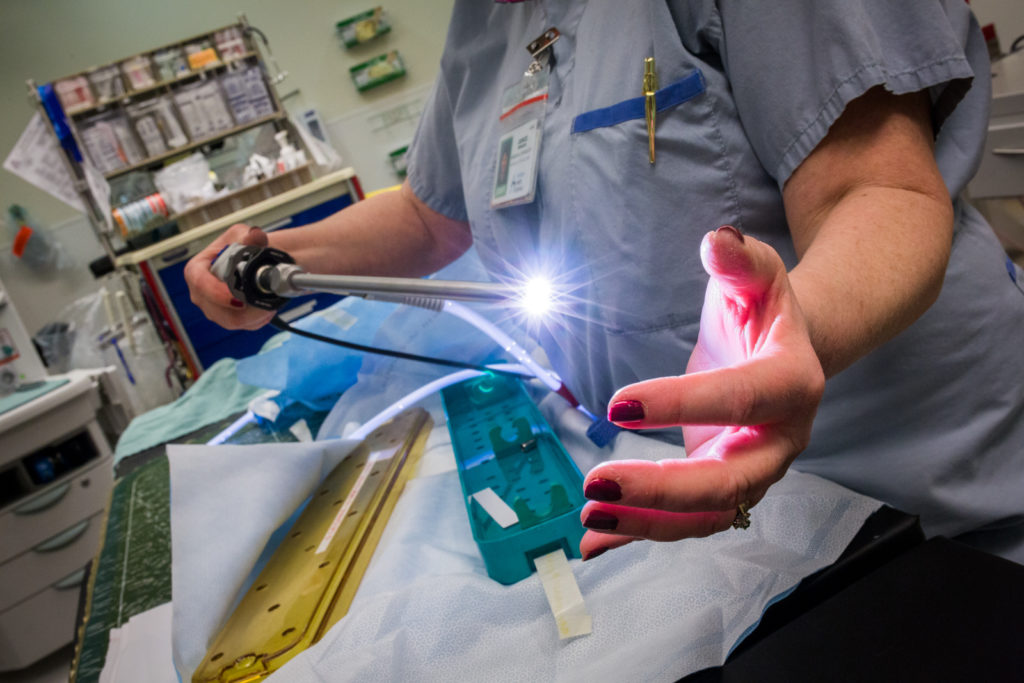Embracing the undeniable connection between health and progress, the Bangladesh government places a high premium on fostering a vibrant and thriving populace.
The achievements that followed are elongated life expectancies, subdued infectious diseases, and a marked decline in infant and maternal mortality rates. Yet, this is not everything; it’s a call to elevate healthcare’s progress further, echoed by a government dispensing incentives for future growth.

Bangladesh is doing remarkably well with biomedical technologies in reshaping the healthcare landscape. Over the past few years, the nation has achieved unprecedented strides, with an almost 20% increase in adopting advanced medical technologies. However, challenges like limited resources and digital literacy have hindered rapid and comprehensive adoption.
Point-of-care diagnostics: Point-of-care diagnostic technologies shine in places where resources are scarce and precise diagnoses are a must. They swiftly and accurately identify diseases, slashing the wait for results and treatment. This is a game-changer for infectious diseases. Keeping these devices accurate and accessible in remote corners, all while tackling the financial puzzle of equipment and tests, is challenging.
Biomedical imaging and radiology: Unveiling medical mysteries, biomedical imaging leaps beyond traditional diagnostics, for instance, MRI, CT scans, and ultrasonograms, revealing hidden stories within patients’ bodies and guiding precise treatments.
Telemedicine and telehealth solutions: Telemedicine is thriving in Bangladesh, aiding people in remote areas lacking healthcare access. Patients from remote areas can access virtual consultations with top specialists from urban medical centers facilitated by telemedicine. Over 1.5 million individuals now benefit from virtual consultations with specialists from urban centers. This technology offers promising healthcare enhancements but faces rural internet issues, digital literacy barriers, data privacy and security, etc.
However, the high costs associated with acquiring and maintaining advanced imaging equipment, the shortage of skilled radiologists, and the uneven distribution of equipment across the country are some challenges that need to be handled.
High-end medical technologies: Imagine a world where intricate medical devices become extensions of the human body, seamlessly integrating with the intricate dance of life. From revolutionary cochlear implants that awaken the symphony of sound for deaf people to cardiac implants that beat in harmony with failing hearts, these technological marvels redefine what it means to heal and thrive. The medical device sector demonstrated growth, with a 10% import CAGR, exceeding the global average. However, the industry’s dependence on imports, especially for diagnostic equipment, highlights the need for local manufacturing and technological advancement.
Electronic Health Records or EHR systems cater to healthcare providers, hospitals, and clinics, aiming to streamline patient data management. EHR systems digitize patient records, improving efficiency in healthcare services, reducing paperwork, and enabling better coordination among medical professionals. Resistance to adopting new technology among healthcare providers and concerns about data security are the main challenges in this sector.
Bangladesh’s progress: When compared to more developed countries, certain disparities become evident. Developed nations often enjoy better access to cutting-edge medical technologies, advanced equipment, and higher healthcare spending per capita. Bangladesh, while progressing, faces challenges related to healthcare infrastructure, funding, and quality of care.
Leading local players in the sector are progressing fast. Renata Limited pioneers research, yielding innovative pharmaceuticals and animal health products. ACI Limited and Orion Pharma diversify healthcare solutions, while Labaid Group makes a mark with hospitals, diagnostics, and pharmacies. There are around ten manufacturers of medical devices and accessories, including JMI, Getwell, Opso Saline, Techno Drugs, Incepta Pharmaceuticals, Bi-beat and Promixco, The Bio Ltd.
Challenges and opportunities: Bangladesh’s healthcare sector faces challenges with low healthcare expenditure, including minimal government allocation. The budget allocation for healthcare is around 5% in the current fiscal, falling short of needs. High out-of-pocket spending at 73% and low insurance coverage at 0.5% place financial burdens on individuals. However, health expenditure per capita rose from USD 9 in 2000 to USD 46 in 2019, indicating growing awareness of healthcare investment.
On the other hand, meager health allocation per person, insufficient service infrastructure, and financial obstacles in fighting malnutrition are sidelined due to the inadequate and misdirected use of funds. Addressing these challenges needs boosting healthcare funding, improving insurance coverage, and enhancing domestic production capabilities. Key steps include increasing funding, investing in healthcare infrastructure, and promoting human resources development. Embracing technology through integrating digital health platforms and telemedicine can bridge gaps and enhance access. Collaborations between the government, private sector, and non-governmental organizations can leverage resources, expertise, and technology to address healthcare challenges. Overall, a holistic approach is necessary to elevate Bangladesh’s medical device and health sector.
Rafia Hasnat Jinia is a tech enthusiast and BUET graduate, currently shaping the future as a Product Development Engineer at The Bio Ltd, a sister concern of YGEN Engineering Ltd.